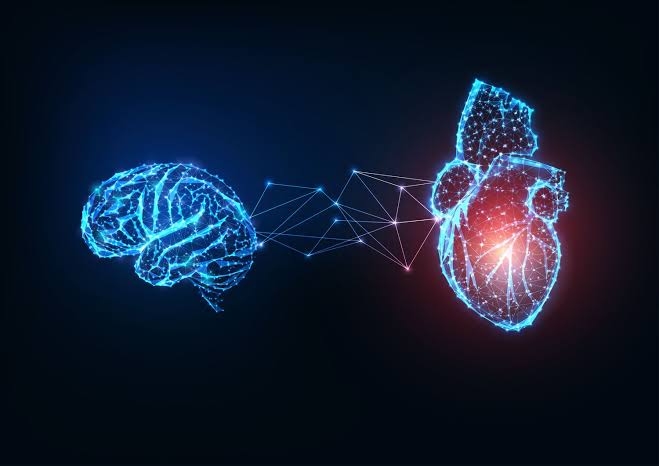The Intricate Dance Between Heart and Brain: Unveiling the Hidden Conversations

It’s well-known that the brain can influence the heart, causing it to race with stressful thoughts or anxiety, and even triggering severe reactions that mimic heart attacks in moments of extreme emotional turmoil. Yet, fewer people are aware that the heart also sends powerful signals back to the brain, shaping our perceptions, decisions, and mental health in profound ways.
These heart-to-brain signals are part of a broader field of study known as interoception, which explores how our bodies communicate with our brains. As scientists delve into this burgeoning field, they uncover the complex and reciprocal relationship between our internal organs and our minds, leading to new insights and potential treatments for conditions like anxiety.
A Two-Way Street: Heart to Brain Communication
The notion that the heart influences the brain is supported by fascinating research. Each heartbeat sends a signal to the brain, much like an event such as seeing an object or hearing a sound. This internal signaling prompts a measurable neural response called the heartbeat-evoked response (HER). These signals can sharpen our senses and even impact memory. For instance, research has shown that people are more likely to forget words displayed during the heart’s contraction phase, known as systole.
Further studies indicate that the heart can influence emotional reactions and decision-making processes. For example, individuals who are more attuned to their heartbeat tend to react more intensely to emotional stimuli. These findings suggest that our brains utilize information from the heart to help us navigate and understand the world.
Interoception and Consciousness
The field of interoception is not just about understanding how our bodies influence our brains but also about exploring the foundations of human consciousness. Cognitive neuroscientist Catherine Tallon-Baudry and her colleagues have found that brain regions heavily involved in memory and navigation also influence heart rate. This overlap hints at a deeper connection between our physical actions and internal states.
Research in mice has shown that manipulating heartbeats can alter behavior in response to perceived threats, highlighting the intricate interplay between heart signals and brain responses. When faced with danger, mice with artificially increased heart rates exhibited more anxiety, suggesting that their brains integrated these internal and external signals to guide their actions.
The Role of the Insula and Beyond
One brain region, the insula, appears crucial in processing these heart-to-brain signals. When researchers disrupted neuron activity in the insula of mice, the animals’ behavior was no longer influenced by their artificially induced racing hearts. This finding underscores the insula’s role in integrating internal bodily signals with external stimuli to influence behavior.
Scientists are now mapping out the complex pathways through which these signals travel. The vagus nerve, a major conduit for information about heart rates, digestion, and breathing, plays a significant role in this communication network. However, much remains unknown about how these signals are processed and utilized by the brain.
Implications for Mental Health and Beyond
Understanding these brain-body interactions opens new avenues for treating mental health disorders. Sarah Garfinkel, a neuroscientist at University College London, has found that training people to better sense their own heartbeats can reduce anxiety. This non-invasive approach could offer an alternative to medication for managing anxiety and other conditions.
Moreover, these insights might shed light on broader questions of human consciousness. Tallon-Baudry suggests that interoceptive signals from various organs contribute to our sense of self and awareness. This idea is supported by studies showing that these internal signals converge in the brain, helping to create our subjective experiences and identities.
Conclusion
The ongoing exploration of interoception and brain-body communication promises to revolutionize our understanding of human biology and behavior. As researchers continue to unravel these complex interactions, they reveal how deeply interconnected our minds and bodies truly are. This holistic perspective not only enhances our understanding of health and disease but also brings us closer to grasping the very nature of consciousness itself.


